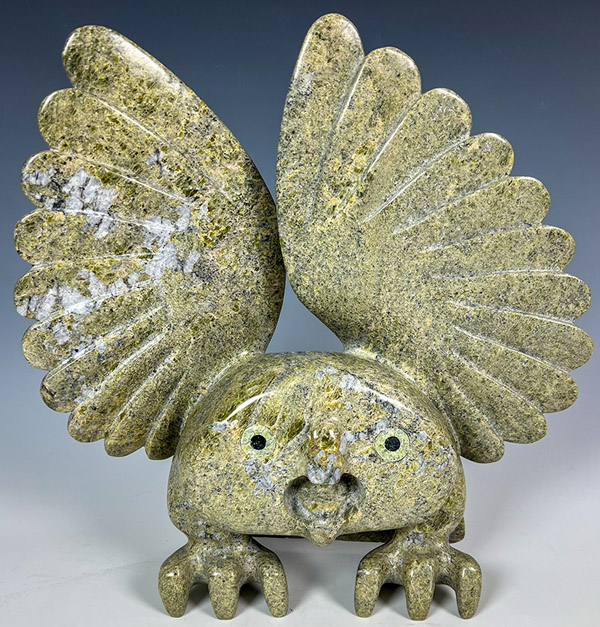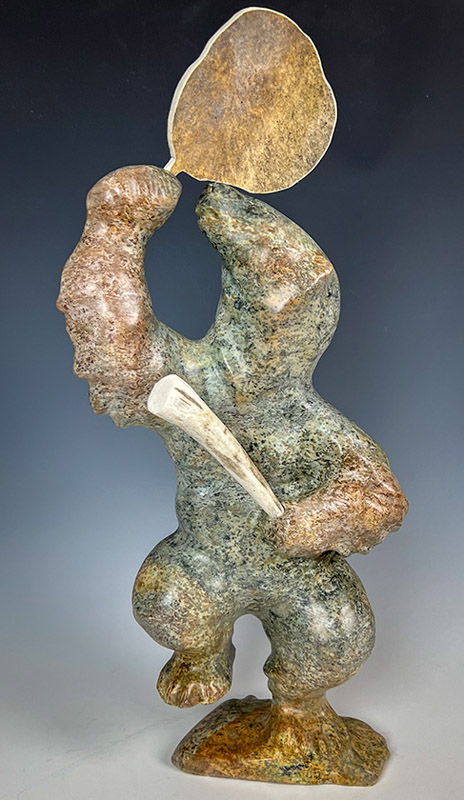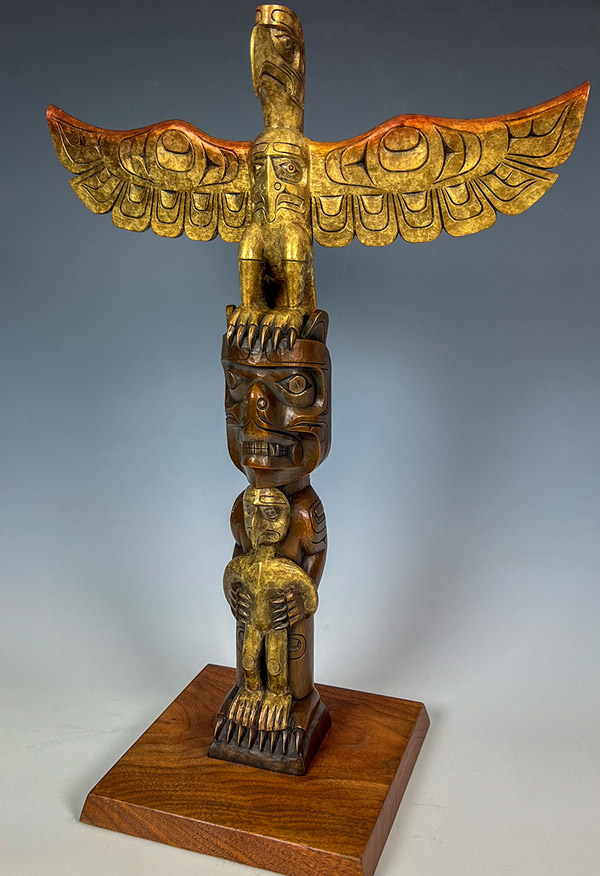Surrounded by a stark landscape, the Inuit people draw inspiration from their intimate relationship with the few indigenous animals of the Canadian Arctic. In a land of snow and rock, Inuit sculptors work with the limited materials available to them; bone, ivory, fur and stone. Despite the limitations of the Arctic, the Inuit have gained international acclaim for their striking imagery which is often amusing, occasionally disquieting and sometimes both.
Arctic Raven’s collection includes stencil prints and serious works in stone depicting Inuit hunting and fishing themes, as well as more whimsical dancing and walking bears. Swimming sea birds, whales, walrus, seals, caribou and Inukshuk complete the selection. The gallery’s Inuit work also reflects the enduring theme of transformation in the myths and artwork of the Arctic peoples. Whether changing from animal into animal or human into animal, these native sculptures represent the belief that nothing dies – it merely changes form.
In a frozen northern world where Inuit villages are isolated from one another by hundreds of miles of road-less wilderness or thousand miles of ice encrusted sea, distinct carving styles have developed partially in response to the limited materials available. From the primitive yet powerful basalt carvings of Baker Lake region, to the shiny sophistication of Cape Dorset soapstone sculpture, each shows a strong imagination and profound connection to the animal and spiritual realms. Arctic Raven Gallery features works from all the major Inuit carving villages.
“Northwest Coast Native art has always had the power to enthrall viewers. From the first explorers to the present day collector, highly graphic and inventive Indian designs have intrigued and sometimes mystified observers. Distinguished by sophistication and complexity, yet composed of simple traditional elements, Northwest Coast Indian art has become one of the most sought after contemporary art forms.
Although grouped together as “Northwest Coast” the work of the major cultural groups – Haida, Tlingit, Tsimpshian, Kwagiutl and Coast Salish – show many stylistic differences. All Northwest Coast native art, however, makes use of local cedar for masks, monumental art, wood carving, bentwood boxes and baskets. Magnificent totem poles and house posts have become emblematic of the Northwest Coast and tell stories of a rich, ancient native culture.
The same traditional form-line designs used on totem poles and masks are now employed on contemporary two-dimensional art. Serigraphs or silk-screens sold in limited editions have become one of the most popular forms of non-traditional, commercial Northwest Coast Native Indian art.
Coast Salish artist Susan Point’s works in glass, and Kwagiutl artists Richard and Stan Hunt’s bronzes have also stretched the boundaries of materials used by contemporary Northwest Coast tribal artists. As prominent Haida artist Robert Davidson has said: “The only way tradition can be carried on is to keep inventing new things.”








